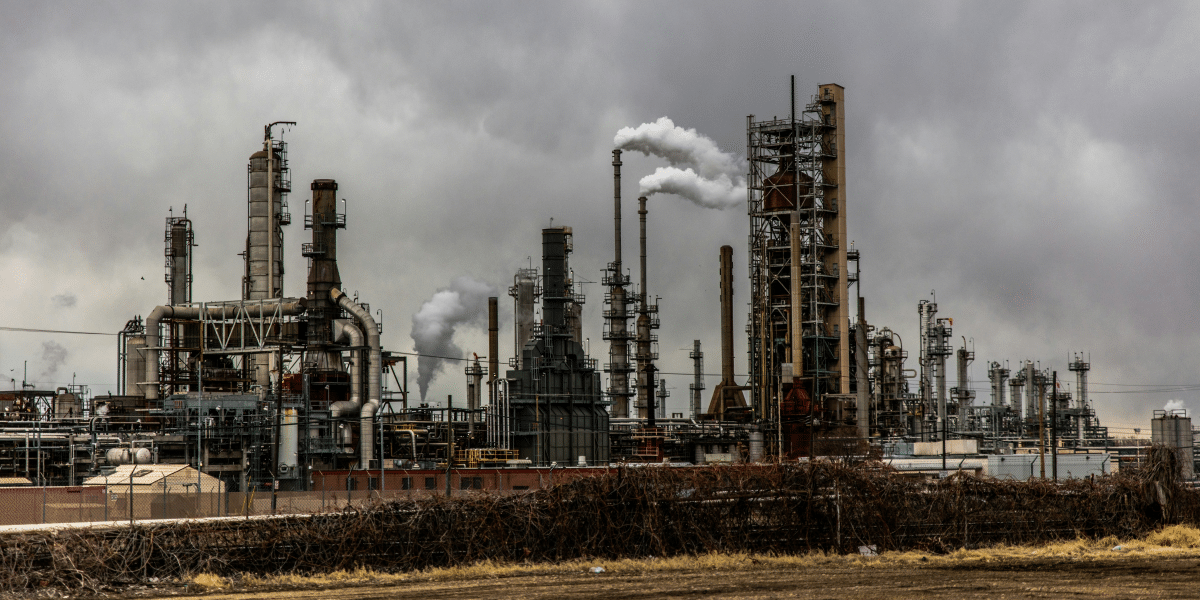By: Meridian Beverly Hills Investment and Legal Group
In Donald Trump’s 2024 platform, one of the major focal points is the enhancement of U.S. infrastructure. This has been a central theme in both his initial campaign and presidency, with promises to restore and modernize America’s roads, bridges, airports, and other critical infrastructure systems. As the country faces growing infrastructure needs due to aging facilities, rising population demands, and increasing environmental challenges, Trump’s vision for 2024 prioritizes investment in transportation, energy, and digital infrastructure.
This article will explore Trump’s vision for enhancing U.S. infrastructure, highlighting his key policy proposals, the support he has garnered from conservative voters and industry leaders, and the challenges these initiatives might face from budgetary concerns and environmental groups.
Trump’s Infrastructure Legacy: What Has Been Done So Far?
During his first term, Trump frequently highlighted infrastructure as a top priority, promising a massive investment to modernize the country’s aging systems. However, despite the focus on infrastructure, many of his ambitious plans encountered obstacles in Congress. While some progress was made, notably through the Tax Cuts and Jobs Act of 2017, which allocated funding for infrastructure projects, Trump’s much-touted $1 trillion infrastructure plan never fully materialized.
One area of success came in the form of deregulation, which Trump believed would speed up infrastructure projects by reducing bureaucratic red tape. Under his administration, the National Environmental Policy Act (NEPA) was reformed to streamline the approval process for infrastructure projects, which proponents argued would lead to faster construction and development.
Trump also took steps to modernize airports and approved several key energy infrastructure projects, such as the Keystone XL pipeline (later halted by President Biden) and the Dakota Access pipeline, which were framed as critical for both job creation and energy independence.
A Massive Infrastructure Investment for 2024
In 2024, Trump’s platform calls for renewed focus on infrastructure, promising to build on the foundation laid during his first term. The core of Trump’s vision for infrastructure centers around a large-scale investment plan aimed at rebuilding and expanding key components of U.S. infrastructure, with specific attention to transportation, energy, and broadband access.
Transportation Infrastructure: Roads, Bridges, and Airports
One of the key components of Trump’s infrastructure vision is a commitment to repairing and modernizing the nation’s roads, bridges, rail systems, and airports. Many of these systems are aging and in dire need of upgrades. The American Society of Civil Engineers (ASCE) regularly gives the country’s infrastructure a grade near D+, highlighting the need for large-scale investment.
Trump’s plan calls for significant investment in rebuilding crumbling bridges, repaving and expanding highway systems, and upgrading public transit systems in major cities. Trump has also promised to reform the Highway Trust Fund and secure additional funding through public-private partnerships (PPPs). Supporters of this approach argue that private investment will reduce the burden on taxpayers while ensuring that critical infrastructure projects can move forward more quickly.
Additionally, Trump’s vision includes the modernization of America’s airports, many of which rank poorly compared to those in other developed nations. His platform emphasizes improving passenger experiences, expanding capacity, and upgrading technology at airports across the country to better accommodate the needs of the growing population and to foster economic growth.
Energy Infrastructure: Promoting Energy Independence
A major pillar of Trump’s infrastructure plan is the expansion and modernization of energy infrastructure. Trump believes that a strong, reliable energy infrastructure is critical for economic growth and national security. His 2024 platform calls for continued investment in oil and gas pipelines, electricity grid modernization, and domestic energy production to ensure that the U.S. remains an energy-independent superpower.
One of Trump’s key proposals is to encourage the construction of new pipelines, such as those proposed during his first term, which were framed as job creators and essential to reducing reliance on foreign oil. His administration sought to streamline the approval process for energy infrastructure projects, aiming to avoid long delays in regulatory reviews.
Additionally, Trump’s platform emphasizes the need to upgrade the nation’s electric grid to ensure it is resilient in the face of modern challenges, such as cyberattacks, extreme weather events, and the increasing demand for electricity as more sectors of the economy become electrified. He has also suggested that investment in nuclear energy and renewable sources like natural gas will play a role in enhancing the nation’s energy security.

By: Meridian Beverly Hills Investment and Legal Group
Expanding Broadband Access
Another important aspect of Trump’s 2024 infrastructure plan is the expansion of broadband internet access, particularly in rural and underserved communities. Trump has argued that reliable, high-speed internet is essential for the modern economy, education, and healthcare systems. During his first term, his administration launched initiatives to expand rural broadband access, such as the ReConnect Program, which provided grants to support the expansion of internet service to rural areas.
In his 2024 platform, Trump promises to accelerate these efforts, ensuring that all Americans, regardless of their location, have access to affordable, high-speed internet. He argues that improved broadband infrastructure will spur economic growth in rural areas, create jobs, and support the education and healthcare systems, especially in remote regions where access to services can be limited.
Streamlining the Approval Process for Infrastructure Projects
A cornerstone of Trump’s infrastructure strategy is his commitment to reducing bureaucratic barriers that he argues prevent critical projects from moving forward. In 2024, Trump’s platform emphasizes the need to continue reforming the National Environmental Policy Act (NEPA) and other regulatory frameworks to streamline the approval process for infrastructure projects.
Trump’s supporters argue that lengthy approval processes—sometimes taking years or even decades—have slowed down progress on vital infrastructure. By cutting red tape and reducing the time it takes to approve new projects, Trump believes that the U.S. can begin addressing its infrastructure needs more quickly, creating jobs and improving public services in the process.
Critics, however, have raised concerns about the potential environmental impact of streamlining these processes, arguing that rolling back environmental safeguards could lead to the approval of projects that harm ecosystems, water quality, and public health.
Supporting Rural Economies
Trump’s infrastructure plan also places a strong emphasis on supporting rural economies through investment in infrastructure. He argues that rural communities have often been overlooked in infrastructure development, leading to economic stagnation in these areas. His 2024 platform calls for increased investment in rural roads, bridges, water systems, and broadband, with the goal of boosting economic growth and improving the quality of life for rural residents.
By improving access to high-speed internet, modernizing transportation systems, and ensuring reliable access to clean water and energy, Trump believes that rural areas can experience the same level of economic opportunity as urban and suburban regions. Supporters of this initiative argue that infrastructure investment in rural areas is critical for creating jobs, supporting agriculture, and ensuring that these communities remain vibrant.
Challenges and Criticism
While Trump’s infrastructure agenda has garnered widespread support from business leaders, construction industries, and conservative voters, it also faces significant challenges. One of the main criticisms is funding: Trump’s infrastructure plans come with a hefty price tag, and it remains unclear how they would be paid for without significantly increasing the federal deficit. While public-private partnerships and infrastructure bonds have been suggested as solutions, critics argue that relying too heavily on private investment could lead to public assets being sold off or overly privatized.
Another concern is the environmental impact of Trump’s infrastructure proposals. Environmental groups have raised alarms about the rollback of environmental regulations and the potential for increased carbon emissions from expanded fossil fuel infrastructure. Critics argue that infrastructure spending should prioritize clean energy and sustainable development, rather than focusing on oil and gas pipelines.
Conclusion
Donald Trump’s 2024 infrastructure platform outlines an ambitious vision for rebuilding and modernizing America’s infrastructure, with a strong focus on transportation, energy, and digital infrastructure. By streamlining regulatory processes, encouraging public-private partnerships, and investing in both urban and rural areas, Trump aims to address the country’s aging infrastructure while creating jobs and boosting economic growth.
While these proposals have garnered strong support from his base and industry leaders, challenges remain in terms of funding and environmental concerns. As the 2024 election approaches, Trump’s infrastructure plan will be a key component of his campaign, appealing to voters who see infrastructure investment as critical to the nation’s future success.
Meridian Beverly Hills Investment and Legal Group
Dr. Sarah Sun Liew for U.S Senate show and today’s America and world new show
Connect with Dr. Sarah Sun Liew
Direct: (424) 343 7025
Tel: (424) 777 6461
Websites: www.sarahsenator.org info@drsarahliewforcongress.com
Facebook: www.facebook.com/sarahsun.liew
Twitter: www.twitter.com/Sarahliew7
YouTube: www.youtube.com/@dr.sarahsunliewforcongress884
Instagram: www.instagram.com/drliewsenate/
Published by: Holy Minoza












